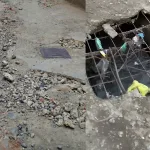Mental difficulties or problems are ways of thinking, feeling or behaving that impact negatively on an adolescent’s quality of life and development.
They can be a part of normal adolescent development; may be responses to events in the adolescent’s life or stressors. Mental difficulties or problems do not meet diagnostic criteria of disorders- they have a different duration, severity and impact.
Perception of what is “normal” or “abnormal” are determined to a large extent by the social and cultural context. Different ways of thinking and behaving across cultures may influence the way that mental illness manifests and is perceived.
Mental illness manifests through thoughts, feelings and behavior of an individual:
1. Thinking (cognition) e.g., interpreting the words or actions of people as being against oneself.
2. Feelings (emotions) e.g., experiencing certain emotions, such as sadness, fear and anger.
3. Behaviours (action) e.g., withdrawing from or being aggressive towards others.
Adolescence is a time of change – changes in hormones and the body, changes in the social environment, and changes to brain and mind. Although most young people develop into healthy adults, adolescence confers vulnerability to mental health problems.
Many mental illnesses, including depression, anxiety, eating disorders, substance use disorders, suicide & self-harm, non-suicidal self-injury, attention deficit hyperactive disorder, border line personality disorder, panic disorder, social anxiety disorder and psychosis first appear before the age of 24 years. Some mental illnesses that start in adolescence persist throughout adult life, creating long-term morbidity and substantial burden on society.
1. Depression: It is a common mental disorder during adolescence. It is primarily characterized by sadness (feelings), loss of interest in activities (thoughts and behaviour), and decreased energy (physical symptoms). Other symptoms include difficulty in concentrating and changes in appetite and sleep. Sometimes, the physical symptoms are more obvious than the feeling of sadness. It is not uncommon for depression and anxiety to occur together in a mixed anxiety-depressive disorder.
2. Anxiety: It describes unpleasant feelings of Apprehension, tension, fear or worry. These feelings can be associated with physical (bodily, somatic) symptoms, such as fast heart rate, sweating or shaking. In adolescence, there may also be an effect on development.
3. substance use disorder: There are a number of disorders resulting from the abuse of psychoactive substances such as alcohol, opioid (heroin), cannabinoids (Marijuana), sedatives and cocaine, tobacco and volatile solvents. The condition includes acute intoxication, harmful use, dependence and psychotic disorders.
4. Eating disorder: They are serious conditions related to persistent eating behaviours that negatively impact our health, our emotion and our ability to function in important areas of life. The most common eating disorders are anorexia nervosa, bulimia nervosa and binge-eating disorder.
• Anorexia Nervosa: This is a potentially life threatening eating disorder characterized by an abnormally low body weight, intense fear of gaining weight and distorted perception of weight and shape. People with anorexia use extreme efforts to control their weight and shape, which often significantly interferes with their health and life activities.
• Bulimia Nervosa: It is a life-threatening eating disorder. When a person has bulimia, they have episodes of binging and purging that involve feeling a lack of control over eating. Many people with bulimia also restrict their eating during the day, which often leads to more eating and purging.
• Binge-eating disorder: when anyone has binge-eating disorder, they regularly eat too much food and feel a lack of control over eating. In it you may eat quickly or eat more food than intended, even when you are not hungry, and you may continue eating even long after you are uncomfortably full.
5. Psychosis: Conditions that include symptoms of psychosis most commonly emerge in late adolescence or early adulthood. Symptoms can include hallucinations or delusions. These experiences can impair an adolescent’s ability to participate in daily life and education and often lead to stigma or human rights violations.
6. Suicide and self-harm: Risk factors for suicide are multifaceted, and include harmful use of alcohol, abuse in childhood, stigma against help seeking, barriers to accessing care and access to means of suicide. Digital media like any other media can play a significant role in either enhancing or weakening suicide prevention efforts.
7. Non suicidal self-injury: It is intentional self-inflicted damage to the surface of one’s body with the expectation that the injury will lead to only minor or moderate physical harm. This typically is done to obtain relief from negative feelings or cognitive state.
8. Social anxiety disorder: Marked and persistent fear of one or more social or performance situations, provoking symptoms of anxiety and causing extensive distress of avoidance of the situation.
9. Panic disorder: People with panic disorder have frequent and unexpected panic attacks. These attacks are characterized by a sudden wave of fear or discomfort or sense of losing control even when there is no clear danger or trigger. Not everyone who experiences a panic attack will develop a panic disorder.
10. Attention deficit hyperactivity disorder: Adolescents with ADHD tend to be easily distracted, inattentive and emotionally immature. They often have behavioural and educational problems. Adolescents with ADHD have an increased tendency for risk taking behaviour, including sexual behaviour.
11. Borderline personality disorder: It is characterized by frequent anger, depression and anxiety, lasting only hours often alternating. Patients with borderline personality disorders are highly sensitive to rejection and fear of abandonment which causes them to demand frequent attention.
The most common mental illnesses in adolescents are anxiety, mood, attention and behaviour disorders. The criteria to make each specific diagnosis are outlined and discussed in the Diagnostic and statistical manual of mental disorders (DSM-V)
Consequences of adolescents’ mental illness
• Suffering (e.g., personal distress, family distress)
• Functional impairment (e.g., inability to study, work, raise a family or be independent)
• Exposure to stigma and discrimination (e.g., isolation, missed opportunities, abuse from others)
• Increased risk-taking behaviour (e.g., excessive alcohol use)
• Premature death (e.g., violence, suicide, overdose of drugs)
Mental health problems, like physical illness can be short lived as well. A person diagnosed with mental health problems will not necessarily have the problem for the rest of his or her life.
Coping mechanisms for adolescents
There are five main types of coping skills – problem-focused strategies, emotion-focused strategies, meaning making, social support and religious coping. Within each category are specific, practical coping skills that adolescents can incorporate into their lives on a daily basis.
Coping skills for adolescents may not be enough when an adolescent has a mental health condition, such as depression, anxiety or PTSD. In these cases, adolescents need integrated treatment that includes clinical therapy as well as learning new coping strategies.
Coping skills are things that adolescence can do to help them reduce and better manage anxiety. They help us to calm our brain and body. There are several types of helpful coping skills that adolescence can use depending on the situation.
1. Relaxation skills: Take 3 deep belly breaths, Take a nap , tense and relax your muscles, self-massage neck & shoulder, meditate, use a relaxation app.
2. Distraction skills: Engage in a hobby, count from 1 to 100, listen to music, puzzles/word search, watch tv/movies, reading.
3. Mental skills: Self coaching, think of 3 things you are grateful for, encouraging statements, visualize yourself calming down, challenge anxious thoughts, think of a peaceful
place.
4. Movement skills: Arm circles, run/jog/brisk walk, exercise, bike ride, stretching/yoga, martial arts.
5. Good health habits: Get a full night’s sleep, do not skip meals, eat healthy food and snacks, reduce caffeine consumption, say no to energy drinks, exercise 3-5 days per week.
6. Creative outlets: Art, writing, colouring/painting, Building, drawing, hands on activities.
7. Self care: Rest, take a break when you need it, get out in nature, take a warm shower, talk to a trusted person.
8. Spiritual strategies: Meditate, practice mindfulness, pray, connect with nature, volunteer for a worthy cause.
Encouragement and Avoidance
Mental health encouragement and avoidance intervention aims to strengthen and individual capacity to regulate emotions, enhance alternatives to risk taking behaviours, build resilience for managing difficult situations and adversity and promote supportive social environment and social networks.
These programmers require a multi-level approach with varied delivery platforms- for example, digital media, health or social care settings, schools or the community- and varied strategies to reach adolescents particularly the most vulnerable.
Conclusion
Mental health problems in adolescence are a significant problem, relatively common and amenable to treatment and intervention. When we are mentally healthy, we enjoy our life and environment and the people in it. We can be creative, learn new things and take risks. We are better able to cope with difficult times in our personal and professional lives.





